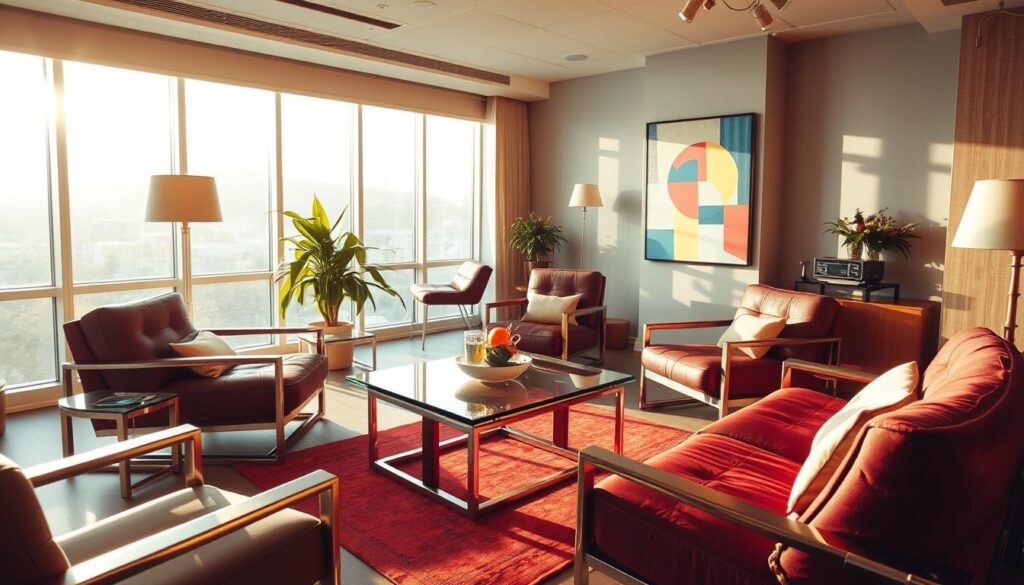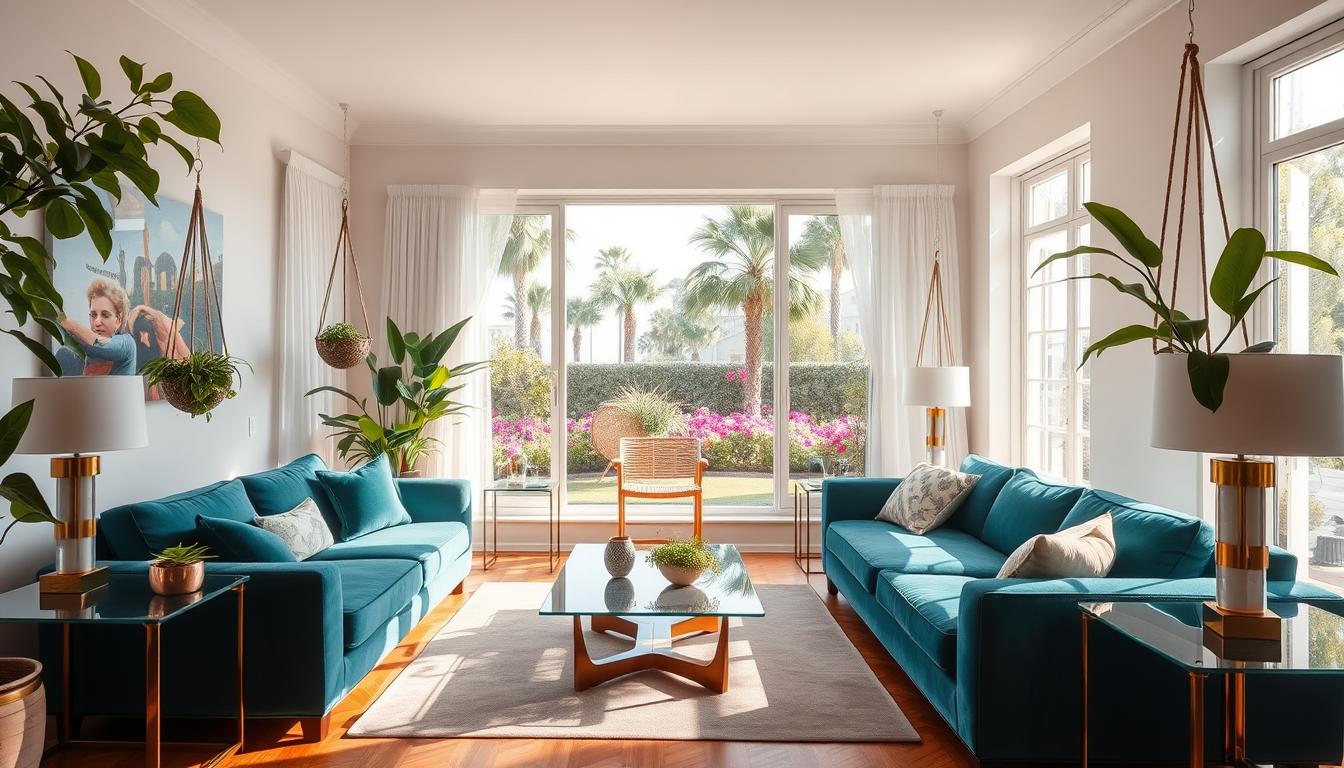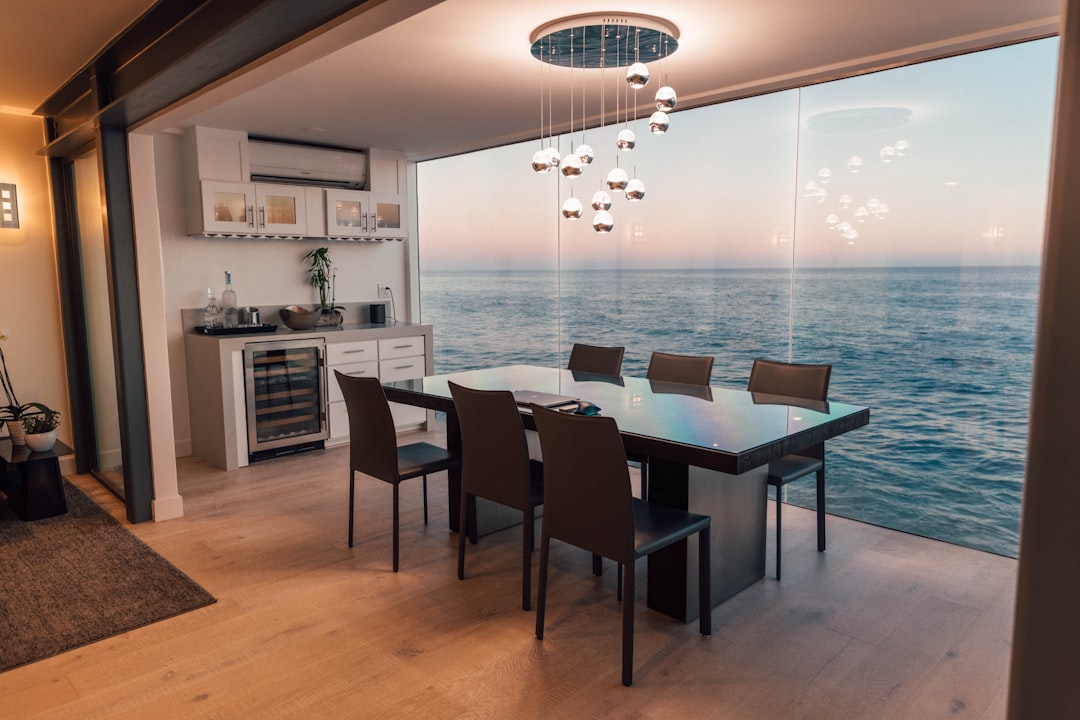The 1980s was a decade of bold statements. Its retro decor is known for vibrant colors, geometric patterns, and eclectic furniture. This era’s style is perfect for adding nostalgia to your home.
We’ll explore the defining features of 1980s decor. We’ll look at influential designers and iconic pieces. You’ll learn how to mix these retro elements with your modern space.
Key Takeaways
- Understanding the core elements of 1980s decor
- How to incorporate retro decor into modern homes
- The role of influential designers in shaping the era’s style
- Tips for balancing vintage pieces with contemporary furniture
- Creating a cohesive look with bold colors and patterns
A Brief Overview of 1980s Interior Design
In the 1980s, interior design became bold and eclectic. This decade was known for vibrant colors, geometric patterns, and eye-catching lighting. These elements became the signature of 1980s interiors.
Defining Characteristics of the Era
The 1980s were all about making a bold statement. Bold colors and geometric patterns were everywhere in wallpapers, carpets, and furniture. Brass and metallic finishes added luxury and glamour to homes.
Lighting fixtures were also key. Neon lights, chandeliers, and sconces were not just for lighting. They became focal points in room design, sparking conversations.
Influential Designers and Architects
Designers like Philippe Starck and Memphis Group were big names in the 1980s. They brought bold, colorful, and whimsical designs to the forefront. Their work made homes vibrant and eclectic.
Architects also played a big role. They used new materials and technologies in their designs. This added to the retro-modern feel of 1980s interiors. Their influence can still be seen in today’s nostalgic house themes and throwback design trends.
Looking back at 1980s interior design, it’s clear that its boldness, luxury, and creativity still inspire today’s retro-modern interiors.
Bold Colors: The Heart of 1980s Aesthetics
The 1980s were all about bold, daring colors in home decor. The era’s interior design was a mix of vibrant hues. These included soft pastels, neon brights, and rich jewel tones that added depth and luxury.
Iconic Color Palettes
The 1980s were known for their bold and vibrant color schemes. Neon hues, deep berry shades, and metallic tones were everywhere. These colors were not just accents but the main attraction in a room’s design.
For example, a typical 1980s living room might have mint green or powder blue walls. The furniture would be in bold, contrasting colors.
| Color | Common Uses | Effect |
|---|---|---|
| Neon Pink/Green | Accent walls, decorative accessories | Added a fun, energetic vibe |
| Jewel Tones (Emerald, Sapphire) | Furniture upholstery, rugs | Created a sense of luxury and depth |
| Pastel Shades | Walls, bedding, curtains | Softened the space, creating a calming atmosphere |
Applications in Home Decor
To bring 1980s bold colors into your home, start with accent pieces. Think throw pillows, blankets, or a statement piece of furniture. For a bigger impact, paint a single wall in a bold color or use vintage-inspired wallpaper as a focal point.
If you want to fully dive into the era’s style, choose a bold color for an entire room. This means richly colored walls with furniture and decor in contrasting shades. The key is to have fun and be adventurous with your colors.
Furniture Trends That Shaped Our Spaces
The 1980s were known for their bold and oversized furniture. This era was all about opulence and excess. These trends left a lasting mark on interior design.
Statement furniture pieces became a big deal in the 1980s. Think oversized sofas, chunky coffee tables, and grandiose chandeliers. These items defined the decade’s style.
Statement Pieces of the 1980s
Statement furniture was all about making a big impact. These pieces were large, bold, and eye-catching. For example, a big, colorful sectional sofa could be the room’s centerpiece.
- Oversized sofas and armchairs, often upholstered in bold, bright colors or patterns.
- Chunky coffee tables made from materials like glass, metal, or wood, often featuring intricate designs.
- Grandiose chandeliers that added a touch of luxury to dining rooms and living spaces.
The Rise of Modular Furniture
On the other hand, the 1980s also brought modular furniture. This was a more practical and flexible option. Modular furniture was designed to be adaptable, fitting different living spaces.
Changing lifestyles led to the rise of modular furniture. It was perfect for those who needed furniture that could change with their needs. Modular sofas, shelving units, and storage systems became popular.
Understanding these trends helps us see how the 1980s still shape our homes today. Whether it’s the bold statement pieces or the practical modular designs, the 1980s’ influence is still felt.
Patterns and Textures: A Playful Approach
Patterns and textures were key in 1980s interior design. They let homeowners show their creativity and individuality. The decade was all about mixing different elements in fun ways, making spaces lively and interesting.
Geometric Patterns and Prints
Geometric patterns and prints were big in 1980s design. You’d see chevron, hexagon, bold stripes, and abstract motifs everywhere. These patterns made rooms more complex and visually appealing.
Bold, colorful prints were everywhere, on fabrics, wallpapers, and floors. They became a symbol of the era’s design.
To add geometric patterns to your home, mix different sizes and shapes. For example, a big geometric pattern on a rug can look great with smaller patterns on pillows or wallpaper. This creates a layered, dynamic look.
Mixing Textures in Design
Mixing textures was also big in 1980s design. The era loved combining smooth surfaces with chunky weaves and soft fabrics with rough materials. This blend of textures made spaces feel cozy and welcoming.
To get a similar feel in your home, mix textures with furniture, accessories, and decor. For instance, a sleek sofa can look great with a chunky throw blanket and a smooth glass coffee table. This creates a rich, layered look.
By embracing the playful use of patterns and textures from the 1980s, you can make a space that’s both nostalgic and uniquely yours.
Lighting Styles That Defined the Decade
Lighting in the 1980s was all about making a statement. Fixtures were as much about style as they were about light. This decade saw lighting designs that were not just functional but truly spectacular.
Statement Lighting Fixtures
The 1980s were known for their opulent lighting fixtures. Chandeliers became a staple in many homes. They came in designs from crystal encrusted to geometric shapes in metallic finishes.
These fixtures were not just sources of light. They were works of art that added glamour and sophistication to any space.
Sconces also played a big role in 1980s lighting. They offered a way to add ambient light while making a decorative statement. Often featuring bold designs and bright finishes, sconces were used to create a layered lighting effect.
This added depth and visual interest to rooms.
Neon and Fluorescent Trends
Neon lighting was another defining feature of 1980s interiors. It added a futuristic and playful touch to spaces. Used in everything from decorative signs to accent lighting in furniture and architectural details, neon brought creativity and whimsy to home design.
Fluorescent lighting also gained popularity. It had a sleek, modern aesthetic and was energy efficient. Used in various applications, from kitchen lighting to decorative fixtures, fluorescent lights helped create a bright, airy feel in homes.
Looking to incorporate throwback design trends into our retro-modern interiors? The lighting styles of the 1980s offer a wealth of inspiration. Whether through statement fixtures or the subtle glow of neon accents, these elements can add a unique and captivating touch to our living spaces.
Incorporating Technology: A Modern Twist
The 1980s saw the rise of personal computers and home entertainment systems. This changed how homes were designed and decorated. Technology became a big part of daily life, influencing interior design.
New media, like MTV and music videos, changed style and decor. Designers started using elements that showed the dynamic, vibrant quality of new media in their work.
The Influence of New Media
New media in the 1980s didn’t just change what people watched. It also changed how they decorated their homes. The bold, futuristic look of music videos and tech gadgets inspired designers.
They created spaces that were both functional and stylish. For example, neon lights and futuristic materials became more common. They added a modern touch to traditional decor.
Integrating Technology into Decor
Adding technology to home decor was about making a statement. Home entertainment systems, personal computers, and gadgets were showcased. This showed the homeowner’s love for the latest tech.
Designers created custom enclosures or furniture to house these technologies. This made them part of the decor.
To bring a similar mix of technology and decor to vintage-inspired rooms, think about using retro-futuristic elements. Old computer parts or vintage electronics can add a unique, personal touch. They honor the 1980s design ethos and make your space special.
Understanding how the 1980s mixed technology and interior design helps us appreciate its innovative spirit. We can use these ideas to create modern, old-school decoration that’s both nostalgic and forward-thinking.
1980s Kitchen and Bathroom Design Innovations
The 1980s saw big changes in kitchen and bathroom design. These changes focused on making spaces more open and modern. The decade moved towards more functional and social living areas.
Popular Materials and Finishes
New materials and finishes emerged in the 1980s. Granite countertops became popular for their durability and beauty. Stainless steel appliances also became trendy, adding a sleek look to kitchens.
Ceramic tiles were everywhere, making cleaning easy. Brass fixtures brought luxury to bathrooms, adding a touch of elegance.
| Material/Finish | Characteristics | Popular Use |
|---|---|---|
| Granite Countertops | Durable, aesthetically pleasing | Kitchens |
| Stainless Steel Appliances | Modern look, easy to clean | Kitchens |
| Ceramic Tiles | Versatile, easy to clean | Kitchens, Bathrooms |
| Brass Fixtures | Luxurious, sophisticated | Bathrooms |
The Open Concept Revolution
The open concept revolution was a big change in the 1980s. It made homes more open and social. Kitchens became part of the main living area, encouraging family time.
This change made kitchens more than just places to cook. They became the heart of the home, where people gathered. It showed how homes were changing to meet new needs and values.
Knowing about these trends helps us mix old and new in our homes. We can create spaces that are both retro and modern, blending style with function.
Accessories and Decor that Evoke Nostalgia
The 1980s were all about vibrant and eclectic style. This was reflected in the decade’s decorative pieces. These elements helped create a nostalgic atmosphere in homes.
Iconic Decorative Pieces
The 1980s brought iconic decorative pieces that added personality to homes. Vintage posters and retro-themed accessories were big hits. They sparked conversations and showed off homeowners’ interests.
Some top decorative items of the decade included:
- Posters of popular movies and music artists
- Retro-colored glassware and ceramics
- Memorabilia from favorite TV shows and sports teams
The Impact of Pop Culture on Decor
Pop culture greatly influenced 1980s decor. TV, film, and music shaped home decor. The decade’s love for technology and innovation was seen in decor, with neon signs and futuristic-looking gadgets becoming popular.
Pop culture’s impact wasn’t just in accessories. It also shaped the overall look of homes. For instance, MTV and music videos led to bold colors and graphic patterns in decor.
Understanding the role of accessories and decor in 1980s design helps us see their nostalgic value. They add to the throwback design trends we still love today.
Reviving 1980s Design in Today’s Homes
Bringing back 1980s design in today’s homes is all about mixing old charm with new style. We aim to blend the bold and playful vibes of that era with today’s modern tastes. It’s all about finding the right mix of nostalgia and modern flair.

Tips for a Contemporary 1980s Look
To get a modern 1980s vibe, start with bold colors and geometric shapes. Look for vintage-inspired furniture, like a Memphis-style coffee table or a bold, patterned armchair.
- Use a mix of bright, bold colors and neutral tones to create a balanced palette.
- Incorporate geometric patterns through rugs, throw pillows, and wallpaper.
- Add vintage or vintage-inspired decorative pieces, such as lava lamps or retro-themed artwork.
Designer Kelly Wearstler says, “The key to mixing vintage with modern is to balance them with clean lines and minimal ornamentation.”
“The 1980s were all about making a statement, and that’s still true today. It’s about being fearless and having fun with your design choices.”
Balancing Vintage and Modern Elements
It’s important to balance vintage and modern elements to create a space that feels both nostalgic and modern. Here are some tips to achieve this balance:
| Vintage Element | Modern Counterpart | Result |
|---|---|---|
| Bold, patterned wallpaper | Minimalist furniture | A balanced, visually interesting space |
| Vintage decorative pieces | Modern lighting fixtures | A blend of old and new |
| Retro-themed artwork | Contemporary rugs | A harmonious mix of styles |
By carefully combining vintage and modern elements, you can create a unique and captivating space. It will honor the 1980s while feeling fresh and contemporary.
Resources for 1980s Interior Design Inspiration
We’ve gathered resources to explore the lively world of 1980s interior design. Whether you love vintage home style or nostalgic house themes, these suggestions will inspire you. They’ll help you dive into the era’s unique aesthetic.
Recommended Resources
For a deep dive into 1980s design, check out books like “The 1980s: A Decorative Lexicon”. Also, visit websites like 1stdibs.com, which showcases vintage pieces and expert advice. These resources are full of info on iconic styles and trends.
Finding Authentic Vintage Pieces
To add real 1980s touches to your home, visit antique stores, estate sales, and online sites like eBay or Etsy. Look for items that show the era’s bold colors and fun patterns. These are key to 1980s interior design.



